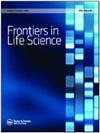利用生物质和粘土去除工业废水中的金属元素
Q1 Biochemistry, Genetics and Molecular Biology
引用次数: 21
摘要
本研究报道了利用花生壳、杏仁壳、甘蔗和粘土G、b两种粘土材料的纯化学预处理生物质,从水溶液中去除镍(II)和铜(II)离子(Ni2+和Cu2+)。这些材料是本地的、容易获得的、用于生物吸附研究的剩余副产品。通过批量实验确定了初始pH、温度、粒径、接触时间等吸附剂因素对吸附过程的影响。在吸附应用方面,生物质和粘土材料对这两种金属离子的去除率高达99%。此外,化学修饰的吸附剂显著提高了生物质的吸收能力,表明预处理后金属与吸附剂之间的亲和力可以增强。采用Langmuir和Freundlich等温线模型分析了平衡等温线,这两个模型都适合解释金属离子在生物质和粘土上的吸附行为。这说明金属离子在吸附剂上的吸附是一种物理吸附机制。综上所述,所利用的生物质由于其出色的镍(II)和铜(II)吸收能力,被证明是一种优秀的生物吸附剂。本文章由计算机程序翻译,如有差异,请以英文原文为准。
Removal of metallic elements from industrial waste water through biomass and clay
This study reports the removal of nickel(II) and copper(II) ions (Ni2+ and Cu2+) from aqueous solution using pure and chemically pretreated biomass from Arachis hypogea (peanut shells), Prunus amygdalus (almond shells), Arundo donax (giant cane) and two clay materials, clay G and clay B. These materials are indigenous, easily available, surpulus by-products for biosorption studies. Batch experiments were carried out to determine the effect of various adsorbent factors such as initial pH, temperature, particle size and contact time on the adsorption process. For adsorption application, up to 99% removal of both metal ions was achieved by biomass and clay materials. Furthermore, chemically modified adsorbents significantly increased the uptake capacity of biomass, suggesting that the affinity between metal and sorbent can be increased after pretreatment. Equilibrium isotherms were analyzed using Langmuir and Freundlich isotherm models, and both models fitted to explain the adsorption behavior of metal ions on to biomass and clay. This shows that the adsorption of metal ions on the adsorbent is a physical adsorption mechanism. In conclusion, owing to its outstanding nickel(II) and copper(II) uptake capacity, the utilized biomass proved to be an excellent biosorbent.
求助全文
通过发布文献求助,成功后即可免费获取论文全文。
去求助
来源期刊

Frontiers in Life Science
MULTIDISCIPLINARY SCIENCES-
CiteScore
5.50
自引率
0.00%
发文量
0
期刊介绍:
Frontiers in Life Science publishes high quality and innovative research at the frontier of biology with an emphasis on interdisciplinary research. We particularly encourage manuscripts that lie at the interface of the life sciences and either the more quantitative sciences (including chemistry, physics, mathematics, and informatics) or the social sciences (philosophy, anthropology, sociology and epistemology). We believe that these various disciplines can all contribute to biological research and provide original insights to the most recurrent questions.
 求助内容:
求助内容: 应助结果提醒方式:
应助结果提醒方式:


